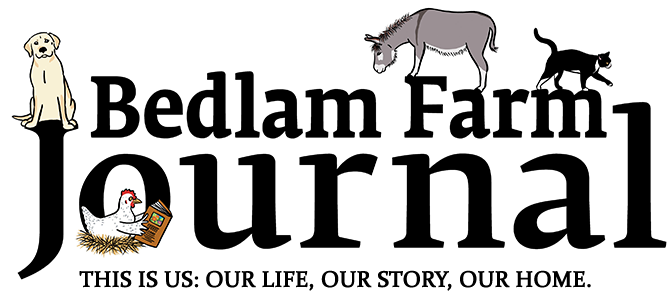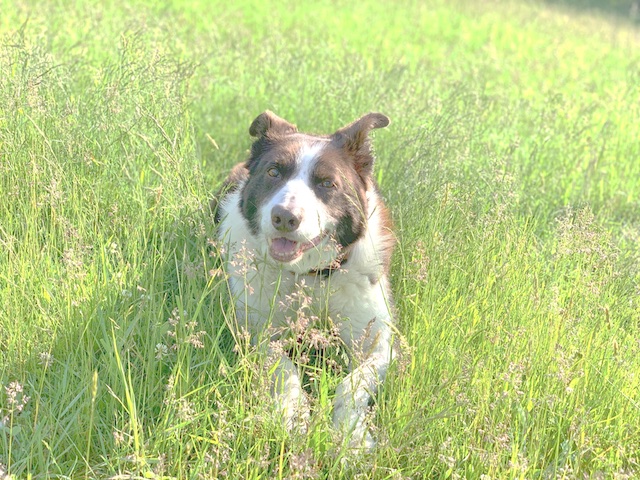When I learned that Red was going blind, I started researching what dogs can see and what they cope with blindness.
I learned that dogs have binocular vision over about 80 degrees of their visual field, good enough for good quality binocular vision.
They are believed to see three-dimensionally, although sight and range varies according to breed.
Border collies probably have a smaller area of binocular vision than Golden Retrievers, example, due to the placement of their eyes and the length of their nose.
Dogs are not color blind, they have chromatic vision, meaning they see the world in two colors. Dogs can see in much dimmer light than humans, they detect motion better than humans can, and they can see flickering light better than people can. Dogs may see a television program as a series of moving frames rather than a continuous scene.
(Come and listen to our new podcast, Katz and Wulf On Bedlam Farm.)
A dog has its eyes low to the ground so their perspective is different from ours. Red appears to be totally blind in one eye he can not see a treat tossed to him from that side. He seems to have about 10 to 20 per cent of his vision on the other side.
He gets around easily, dogs have other balancing instincts and senses to use – their superior hearing and smell, both said to be many times that of humans. When Red goes to the car, he hesitates a while to get his bearings before leaping up. Sometimes he miscalculates and hits the side of the seat.
In the pasture, I think he can see some blurry form of the sheep, he seems to know more or less where they are, although sometimes when they move, he loses track of them.
In the house, I see he responds by limiting his movements. Once or twice a day he may walk into a sofa or chair if it has been moved. Mostly, he stays by my living room chair when I am sitting in the living room, and by my office swivel chair in my study.
I think he compensates by listening more and by moving less. He sticks to familiar ground.
He manages to never be more than a few feet from me, although if I have moved while he is sleeping, he may be disoriented and have to search for me, listening and smelling. If I call his name, he can find me quickly.
He has memorized the routes to the living room, the front door and the pasture.
I am increasingly aware of his sight issues. I bang the food bowl on the floor so he can hear it, and make sure I offer him treats or put them on the ground on his better eye. She sheep are definitely aware of Red’s sight problems, he can’t make the eye contact he used to make, and the sheep respect him, but don’t move in response to him in the way he used to.
Red is still for much of the day, sleeping in place unless I get up or go out. I am bringing him to fewer places as he can get confused and anxious if he loses track of me. The Mansion work is special, he is very much at home there.
(Today, we are going to the Mansion to read to the residents.)


What a lovely picture of Red !! He looks very
Peaceful!!
I believe in this case, binocular vision doesn’t refer to magnification – it means that images that the two eyes see are combined, thus giving you 3D vision. Losing the vision in one eye means you can’t detect depth like you can with two, which is why Red would have trouble judging the jump into the car. (My husband was blinded in one eye as a teenager, and while you learn other depth cues to compensate over time, he still goes crashing into things if he moves too fast and misjudges distance.)